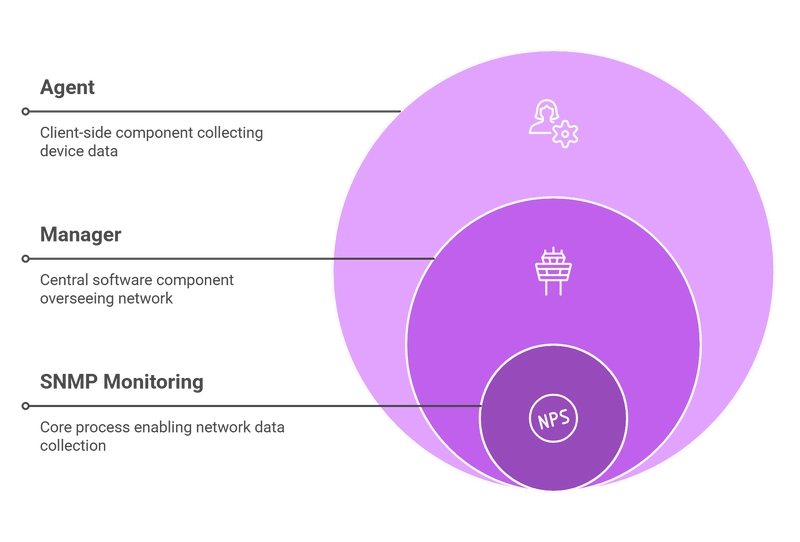5 Reasons to Choose JWT Over Session-Based Authentication
When building secure and scalable applications, authentication is one of the key decisions developers must make. Traditionally, session-based authentication has been the go-to method for managing user sessions. However, JSON Web Tokens (JWTs) have gained immense popularity as a more flexible and scalable alternative. But what makes JWT a better choice than session-based authentication? What Is Session-Based Authentication? Session-based authentication is a method where a server maintains session data for logged-in users. When a user logs in, the server creates a session ID and stores it (often in a database or in-memory store like Redis). The client stores this session ID as a cookie and sends it with each request to verify the user's identity. Advantages: Simple to implement No need for token parsing Supports session invalidation easily Drawbacks: Requires server-side storage Not ideal for stateless applications Does not scale well for distributed systems What Is JWT Authentication? JSON Web Tokens (JWTs) offer a stateless authentication mechanism. Instead of storing session data on the server, JWTs contain all the necessary user information within the token itself. JWTs consist of three parts: Header – Defines the token type and signing algorithm (e.g., HMAC, RSA). Payload – Holds claims (user ID, role, expiration, etc.). Signature – Verifies token integrity. Advantages: Stateless and scalable Reduces load on the server Works well with microservices and APIs Now, let’s dive into the five biggest reasons why JWT is often the better choice over traditional session-based authentication. 1. JWT Is Stateless, Making It Highly Scalable One of the biggest issues with session-based authentication is state management. Each time a user logs in, the server must store their session ID. If you have thousands or millions of users, this can become a bottleneck. With JWT, the authentication data is stored in the token itself, eliminating the need for server-side session storage. Why does this matter? Servers don’t have to store user sessions, reducing memory consumption. You can scale authentication across multiple servers without worrying about syncing sessions. Works perfectly in serverless architectures and microservices where maintaining sessions would be complex. Real-world example: If your app runs on multiple load-balanced servers, traditional session authentication would require a centralized session store (e.g., Redis). With JWT, any server can verify a request without needing session lookup, making things much smoother. 2. JWT Works Seamlessly with APIs and Microservices Modern applications often use REST APIs or GraphQL APIs, where each request is stateless. Traditional session authentication doesn’t fit well because: APIs need to query the session store for every request. A centralized session store introduces a single point of failure. Load balancing becomes trickier when session data is stored on specific servers. Since JWTs contain authentication data inside the token itself, API servers can verify requests without relying on a shared session store. How JWT improves API authentication: Faster – No need for database lookups. Distributed-friendly – Any microservice can verify JWT without extra dependencies. Decoupled authentication – Works seamlessly across multiple services and third-party APIs. Real-world example: Imagine a large-scale e-commerce platform with separate services for payments, inventory, and orders. JWT allows each microservice to independently verify users without contacting a central authentication server. 3. Better Security with Signed Tokens JWTs use cryptographic signatures to verify integrity. Once a JWT is issued, the server doesn’t need to store anything—it just needs the secret key (HMAC) or public/private key pair (RSA) to validate tokens. How JWT ensures security: JWTs are digitally signed, preventing tampering. Tokens can include expiration times (exp) to prevent misuse. Supports role-based access control (RBAC) by embedding roles inside the payload. Tokens can be signed with asymmetric encryption (RSA, ECDSA) for even stronger security. Common security best practices for JWT: → Always set an expiration (exp) to prevent token reuse. → Use HTTPS to prevent token interception. → Store JWTs in secure HTTP-only cookies to mitigate XSS attacks. → Rotate signing keys periodically to prevent key leaks. Real-world example: A SaaS application wants to issue short-lived access tokens and long-lived refresh tokens to control session expiration. JWT makes this easy by encoding expiry timestamps inside the token. 4. JWT Enables Single Sign-On (SSO) JWT is an excellent choice for single sign-on (SSO), where users authenticate once and gain access to multiple applica

When building secure and scalable applications, authentication is one of the key decisions developers must make. Traditionally, session-based authentication has been the go-to method for managing user sessions. However, JSON Web Tokens (JWTs) have gained immense popularity as a more flexible and scalable alternative.
But what makes JWT a better choice than session-based authentication?
What Is Session-Based Authentication?
Session-based authentication is a method where a server maintains session data for logged-in users. When a user logs in, the server creates a session ID and stores it (often in a database or in-memory store like Redis). The client stores this session ID as a cookie and sends it with each request to verify the user's identity.
Advantages:
- Simple to implement
- No need for token parsing
- Supports session invalidation easily
Drawbacks:
- Requires server-side storage
- Not ideal for stateless applications
- Does not scale well for distributed systems
What Is JWT Authentication?
JSON Web Tokens (JWTs) offer a stateless authentication mechanism. Instead of storing session data on the server, JWTs contain all the necessary user information within the token itself.
JWTs consist of three parts:
- Header – Defines the token type and signing algorithm (e.g., HMAC, RSA).
- Payload – Holds claims (user ID, role, expiration, etc.).
- Signature – Verifies token integrity.
Advantages:
- Stateless and scalable
- Reduces load on the server
- Works well with microservices and APIs
Now, let’s dive into the five biggest reasons why JWT is often the better choice over traditional session-based authentication.
1. JWT Is Stateless, Making It Highly Scalable
One of the biggest issues with session-based authentication is state management. Each time a user logs in, the server must store their session ID. If you have thousands or millions of users, this can become a bottleneck.
With JWT, the authentication data is stored in the token itself, eliminating the need for server-side session storage.
Why does this matter?
- Servers don’t have to store user sessions, reducing memory consumption.
- You can scale authentication across multiple servers without worrying about syncing sessions.
- Works perfectly in serverless architectures and microservices where maintaining sessions would be complex.
Real-world example: If your app runs on multiple load-balanced servers, traditional session authentication would require a centralized session store (e.g., Redis). With JWT, any server can verify a request without needing session lookup, making things much smoother.
2. JWT Works Seamlessly with APIs and Microservices
Modern applications often use REST APIs or GraphQL APIs, where each request is stateless. Traditional session authentication doesn’t fit well because:
- APIs need to query the session store for every request.
- A centralized session store introduces a single point of failure.
- Load balancing becomes trickier when session data is stored on specific servers.
Since JWTs contain authentication data inside the token itself, API servers can verify requests without relying on a shared session store.
How JWT improves API authentication:
- Faster – No need for database lookups.
- Distributed-friendly – Any microservice can verify JWT without extra dependencies.
- Decoupled authentication – Works seamlessly across multiple services and third-party APIs.
Real-world example: Imagine a large-scale e-commerce platform with separate services for payments, inventory, and orders. JWT allows each microservice to independently verify users without contacting a central authentication server.
3. Better Security with Signed Tokens
JWTs use cryptographic signatures to verify integrity. Once a JWT is issued, the server doesn’t need to store anything—it just needs the secret key (HMAC) or public/private key pair (RSA) to validate tokens.
How JWT ensures security:
- JWTs are digitally signed, preventing tampering.
- Tokens can include expiration times (exp) to prevent misuse.
- Supports role-based access control (RBAC) by embedding roles inside the payload.
- Tokens can be signed with asymmetric encryption (RSA, ECDSA) for even stronger security.
Common security best practices for JWT:
→ Always set an expiration (exp) to prevent token reuse.
→ Use HTTPS to prevent token interception.
→ Store JWTs in secure HTTP-only cookies to mitigate XSS attacks.
→ Rotate signing keys periodically to prevent key leaks.
Real-world example: A SaaS application wants to issue short-lived access tokens and long-lived refresh tokens to control session expiration. JWT makes this easy by encoding expiry timestamps inside the token.
4. JWT Enables Single Sign-On (SSO)
JWT is an excellent choice for single sign-on (SSO), where users authenticate once and gain access to multiple applications.
Why JWT works well for SSO:
- The same JWT can be used across multiple services.
- Eliminates the need for multiple session stores.
- Works seamlessly with OAuth 2.0 for third-party logins (Google, GitHub, etc.).
Real-world example: A company has multiple apps (HR portal, email service, dashboard). Instead of maintaining separate login sessions for each, it issues a single JWT that grants access to all apps.
5. JWT Works Better for Mobile & SPAs (Single-Page Applications)
With mobile apps and SPAs (React, Vue, Angular), JWT is a much better fit than traditional sessions.
Why?
- Sessions rely on cookies, which don’t work well with mobile apps and APIs.
- JWTs can be stored in local storage, IndexedDB, or secure storage.
- No need for complex session handling—tokens can be easily passed via headers.
Best practices for mobile & SPA authentication with JWT:
- Store access tokens securely (use Secure Storage on mobile).
- Use refresh tokens for re-authentication.
- Implement silent authentication to refresh tokens behind the scenes.
Real-world example: A React SPA needs to interact with a backend API. Instead of handling sessions via cookies, it sends a JWT with each request, making authentication seamless.
Quick Recap – Why Choose JWT Over Sessions?
→ Scalability – No session storage required, perfect for microservices.
→ API-Friendly – Stateless design works well with REST & GraphQL APIs.
→ Better Security – Cryptographic signatures prevent tampering.
→ SSO Support – Use a single token across multiple apps.
→ Great for SPAs & Mobile Apps – Works smoothly without cookies.
You may also like:
Read more blogs from Here
Share your experiences in the comments, and let’s discuss how to tackle them!
Follow me on Linkedin








































































































































































![[The AI Show Episode 143]: ChatGPT Revenue Surge, New AGI Timelines, Amazon’s AI Agent, Claude for Education, Model Context Protocol & LLMs Pass the Turing Test](https://www.marketingaiinstitute.com/hubfs/ep%20143%20cover.png)



































































































































![From drop-out to software architect with Jason Lengstorf [Podcast #167]](https://cdn.hashnode.com/res/hashnode/image/upload/v1743796461357/f3d19cd7-e6f5-4d7c-8bfc-eb974bc8da68.png?#)









































































































.jpg?#)































_ArtemisDiana_Alamy.jpg?#)


 (1).webp?#)









































































-xl.jpg)












![Yes, the Gemini icon is now bigger and brighter on Android [U]](https://i0.wp.com/9to5google.com/wp-content/uploads/sites/4/2025/02/Gemini-on-Galaxy-S25.jpg?resize=1200%2C628&quality=82&strip=all&ssl=1)










![Apple Rushes Five Planes of iPhones to US Ahead of New Tariffs [Report]](https://www.iclarified.com/images/news/96967/96967/96967-640.jpg)
![Apple Vision Pro 2 Allegedly in Production Ahead of 2025 Launch [Rumor]](https://www.iclarified.com/images/news/96965/96965/96965-640.jpg)


































































































































